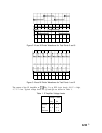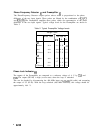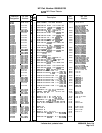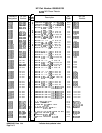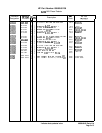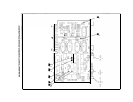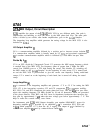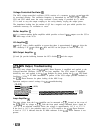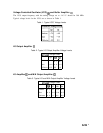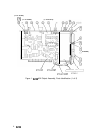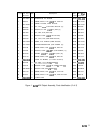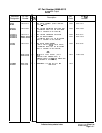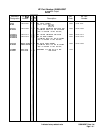
A7A4
A7A4 M/N Output, Circuit Description
A7A4 amplifies the output of the
A7A4Al
M/N VCO in two different paths. One path is
amplification and buffering to drive the mixer in the M/N phase-lock loop. The other path
drives a divide by two which, after further amplification, goes to the
AllA
Sampler.
The integrating loop amplifier which generates the tuning voltage for the M/N VCO is also
included on A7A4.
LO Output Amplifier
@J
Q5 is a common-emitter amplifier followed by a resistive pad to increase reverse isolation.
Q2
is a common-base amplifier which is broadly tuned by L2, LlO, and associated capacitances.
Ql
is another common-emitter amplifier which is followed by a 400 MHz low-pass filter.
Divide By 2
@
U2 is an ECL divide-by-2 Integrated Circuit. U2 generates the M/N output frequency which
is one-half that of the M/N VCO. For frequency spans of greater than 5 MHz, the M/N
control line (LMNE)
g
oes to a TTL high during the sweep. This disables U2, switching off
the M/N output to the
AllA
Sampler. At the beginning of each sweep, U2 is turned back
on and the M/N VCO is phase-locked to give the correct start frequency. During multi-band
sweeps, U2 is turned on at the beginning of each band, but is turned off during the actual
sweep.
Loop Amplifier
@
Ul
is connected as an integrating amplifier and generates -5 V to -35 V for tuning the M/N
VCO. Cl3 is the integrating capacitor; Cl2 and Cl5 compensate
Ul
to guarantee stability.
R33, R34, C14, and R15 compensate the entire phase-lock loop. The 200 kHz low pass filter
rejects the sampling frequency (20 MHz divided by N) and its harmonics which are generated
in the phase detector. CR6, R42, and R41 form an impedance breakpoint that increases the
loop gain by approximately 5 dB when the tune voltage goes below approximately -7 V. This
helps to make the varactor tuning curve linear.
For instruments with A7A4 M/N Output Assembly, part number 85660-60267, power for
integrating amplifier
Ul
is provided by an additional
+20
V connection (Pl-9, P24) and
by
QlO
which generates -15 V from the -40 V supply. The output of
Ul
is buffered by
common-base amplifier
QS
and by emitter-follower buffer
Q9.
A7A4
1



